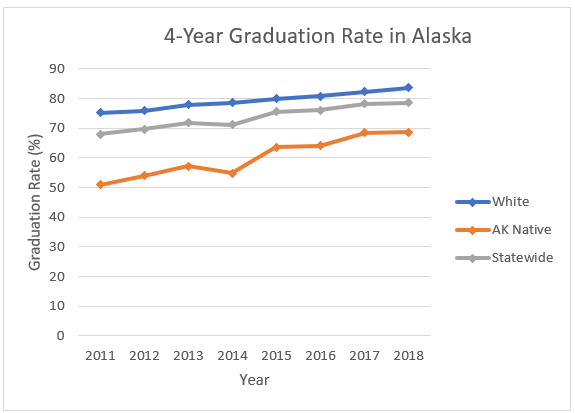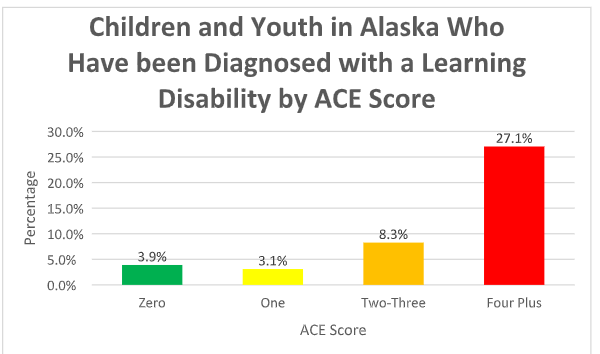Using Data to Promote Equitable Outcomes

As members of the STEPS community, we are all dedicated to providing the most equitable education for all students in Alaska. We are familiar with the collective and intergenerational trauma caused by Alaskan boarding schools and strive to promote a trauma-informed and culturally-responsive approach to education. We know that recent research into adverse childhood and community experiences, or ACCEs, shows that schools are not currently prepared to adequately support students who have experienced trauma, either first-hand or intergenerational. How then, can we present this issue to people who are unfamiliar with this history, and start to move the needle towards enacting culturally-responsive teaching methods across Alaska?
Data analysis and visualization are powerful tools that we can use in order to spark unbiased, productive conversations surrounding student outcomes. Data analysis allows us to measure the relative performance of students based on different characteristics. By framing the discussion around these numbers, we can more easily create buy-in, demonstrate the tangible impacts of intergenerational trauma to our stakeholders, and focus on who we can most effectively serve.
For example, using PEAKS data from the Department of Education and Early Development, we can see that there is a persistent and significant gap between Caucasian and Alaska Native student outcomes, in both standardized test scores and graduation rates. We know that students of all backgrounds have the same capacity to succeed, this graph shows that we need a different approach to education policy, especially as it relates to Alaska Native students.


As Alaskans, we know that much of this disparity can be explained through a trauma-informed lens. The colonial effort to separate Alaska Native people from their culture through boarding schools subjected these students to a disproportionate number of ACCEs. Although these policies no longer exist, Alaska Native students continue to exist in a system that generally does not take into account their culture, language, or the intergenerational impacts of historical trauma.
We can demonstrate the impact of ACCEs on learning through data visualization: as shown below, there is strong positive correlation between the number of ACCEs a child experiences and the prevalence of learning disabilities. These data, along with historical context, show how important a trauma-informed and culturally-relevant education is for Alaska Native students.

Data analysis is an effective tool for promoting equity. Even when most people understand that there has been an achievement gap due to a discriminatory educational system, its impact can be more clearly seen through these data trends and related stories. This month’s STEPS newsletter focuses on data-driven efforts to improve the lives and education for our students, and the power data analysis can have in affecting change.
# # #
